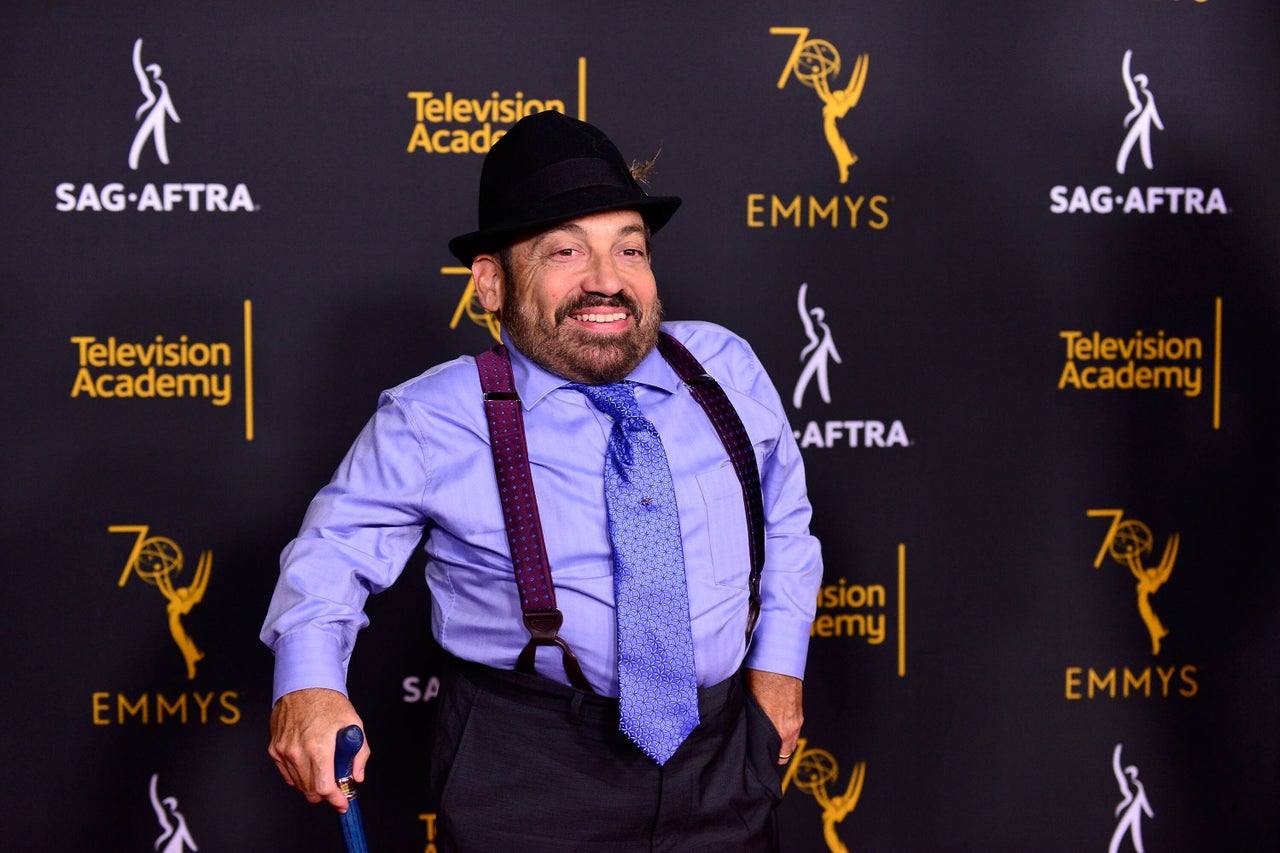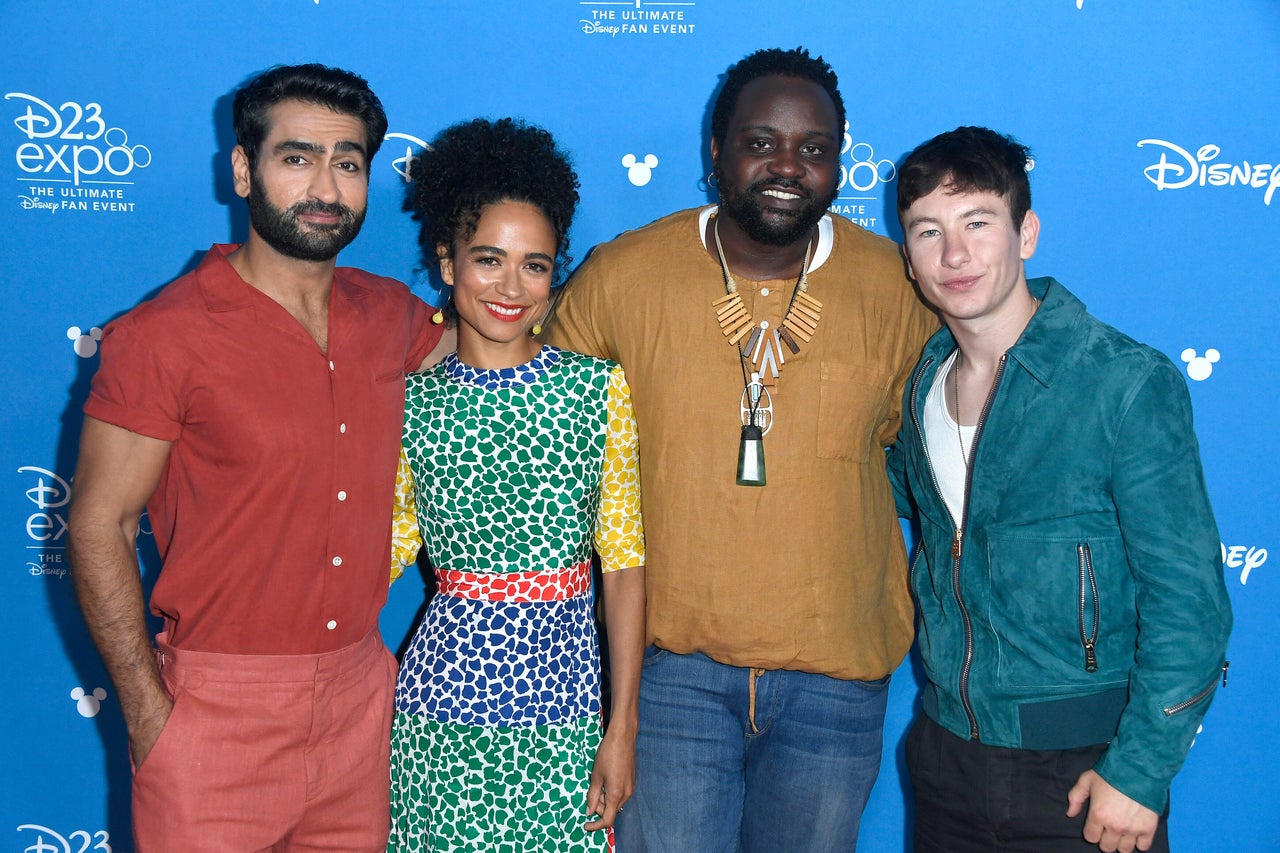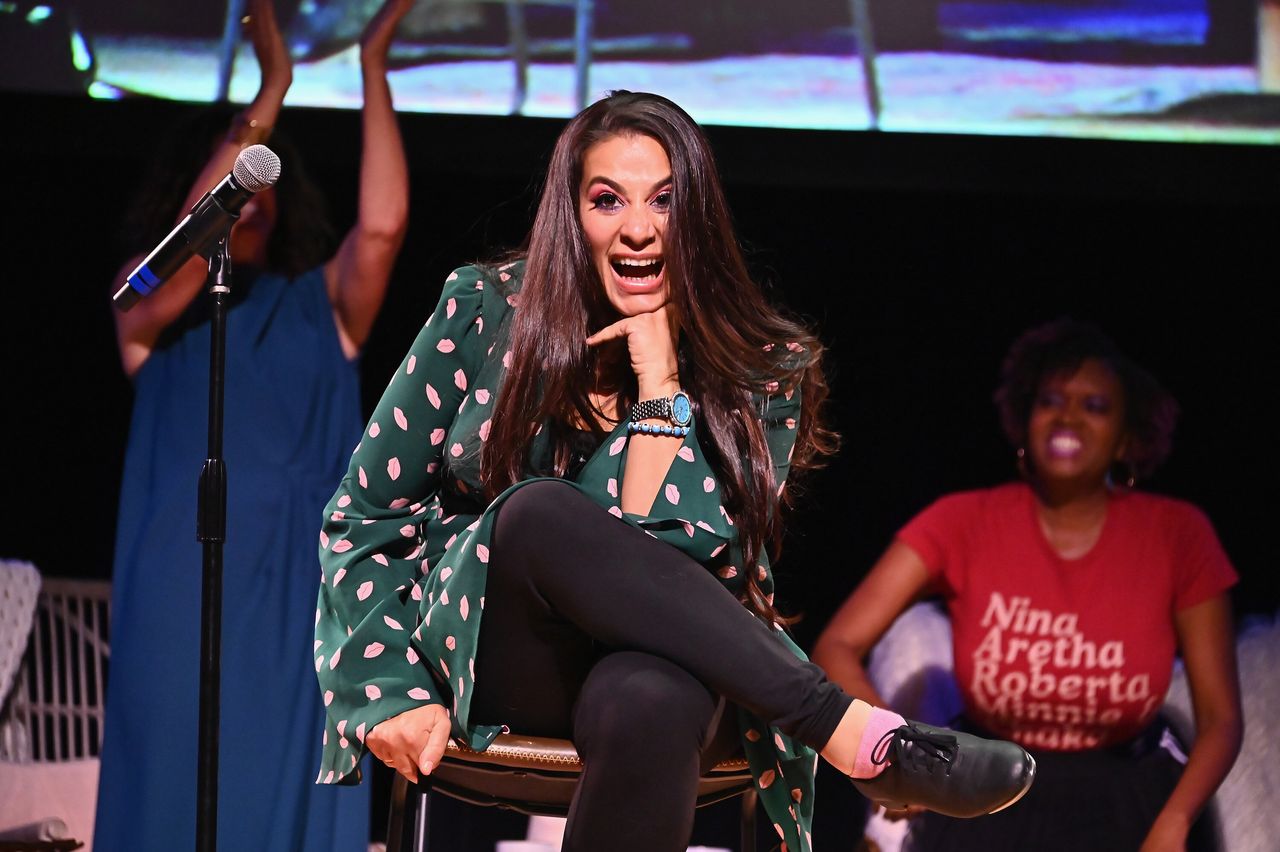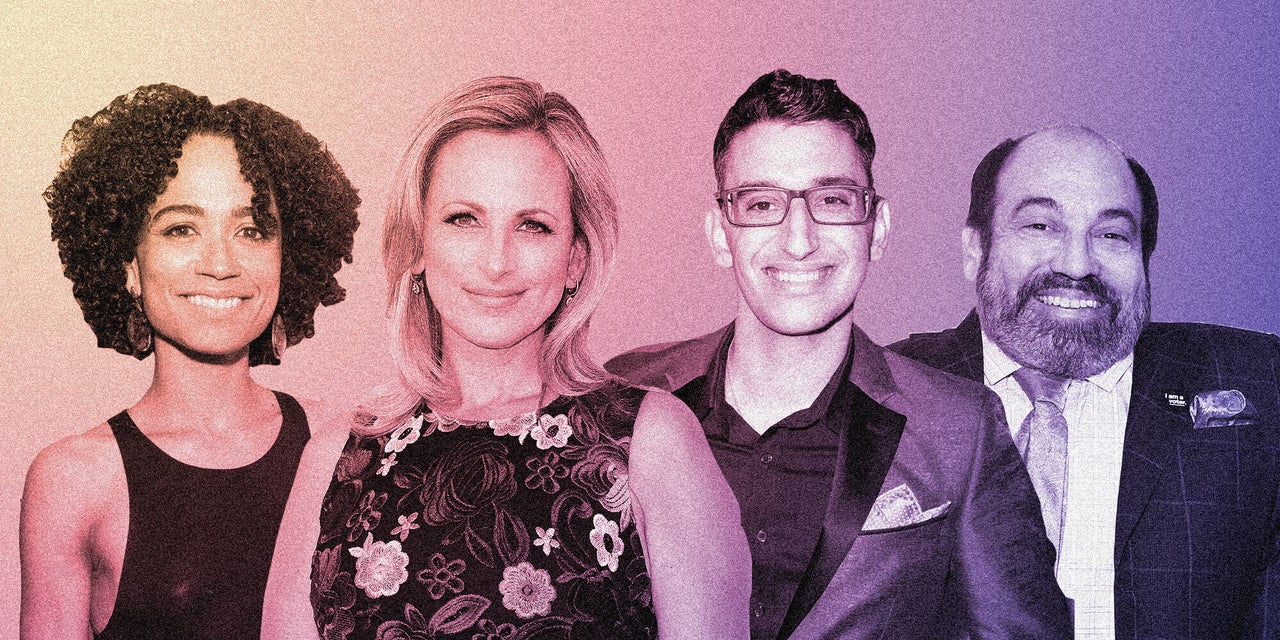A pedophilic circus performer. A comedic womanizer. A killer.
These were just a few of the roles that Danny Woodburn was offered when he began auditioning for film and TV roles in the early 1990s. Woodburn, a self-described little person, quickly found that nearly every character he portrayed was “miserable,” broken or evil.
“The go-to, I think, for little people is to make them creepy or animalistic,” the actor and producer told HuffPost.
Even after landing a recurring role on “Seinfeld” and scoring gigs on shows including “Watchmen,” “Jane the Virgin” and “CSI,” Woodburn said he still came across casting opportunities that recycled tiresome tropes invoking pathos for “the sad little man.” Just a couple of years ago, casting directors tried to pitch him on a role in a Christmas special by saying he’d get the chance to kiss a famous performer.
“The big selling point was that I’d be able to make out with this well-known actress,” Woodburn said of the project. “I was like, ’Who cares about that when you’ve created this horrible, stereotypical character and the idea is that I should be so lucky to have this opportunity as a little person to be in the arms of this well-known actress and making out with her on screen?’ They were looking down on little people in that sense.”
Woodburn turned down every role that he found to be demeaning toward people with disabilities, determined not to contribute to objectifying portrayals of disability.
“It’s cost me a lot of jobs, but at the same time it’s given my career longevity,” he said.

The entertainment industry has always struggled to provide authentic representation of people with disabilities. In 2016, only 2.7% of characters in the 100 highest-earning movies were disabled, according to a report from the University of Southern California’s Annenberg School for Communication and Journalism. And if people with disabilities are depicted at all in film, television or theater, they tend to be in polarizing narratives that portray them as objects of pity or inspiration. Stories approaching disabled characters through a holistic, neutral lens are few and far between.
It also takes creative people with disabilities significantly longer than their nondisabled peers to get their big break, if they do at all.
Disabled people are often shut out of Hollywood because they “miss a rung on the ladder” early on in their careers, talent agent Gail Williamson of KMR Talent said last year at ReelAbilities, the largest festival of films for and about people with disabilities.
For some people, that means being shut out of a writers room. For many, it means dealing with unsupportive film schools or a casting director’s blunt preference for abled artists. And for others, a missed career opportunity can be attributed to nothing more than a damn broken elevator.
Accessible, But Not Really
In January 2019, Fuchsia Carter signed up for an audition that specifically said performers with disabilities were welcome. Carter, a trained actor who uses a wheelchair, emailed the production company to ask whether the building was accessible. “Regrettably, the space we perform in is only accessible by stairs,” the company’s team wrote back, noting they were “delighted” she wanted to audition.
Carter has had dozens of similar experiences over the course of nearly a decade. She has turned up for auditions only to discover the building doors weren’t wide enough, the elevator was out of order or there was no parking.
When she does finally make it to an audition, casting directors often assume her wheelchair is a prop. They’re floored that a wheelchair user could also be a professional actor.
“I often get asked if I can show able-bodied actors how to use a wheelchair convincingly,” said Carter, recalling one incident when casting directors for a crime show asked her if she could give lessons to another actor up for the same role. “I’m like, no, you can either hire me as the actor for the character or you can go jump.”
Even at the most basic training level, actors with disabilities are denied opportunities to hone their craft.
Actor Christine Bruno, who received a degree in acting and directing in 1998, said dance movement classes were typically a requirement for her programs — but that she didn’t have the opportunity to take them.
“They wouldn’t teach me because they didn’t know how to teach me,” said Bruno, who has cerebral palsy and has since been cast in “Law & Order” and, most recently, the CBS series “God Friended Me.” “They probably didn’t want to be responsible for whatever liability they thought that that would bring, so basically they refused to allow me to take their classes.”
When she asked the administration if there was another way she could fulfill the requirement, they told her not to worry about it.
“I was like, wait a minute,” she said. “I’m paying all this money for an education. I want to be afforded the same education everyone else is getting.”
“I often get asked if I can show able-bodied actors how to use a wheelchair convincingly.”
- Fuchsia Carter, actor
Other disabled professionals in the entertainment industry said they’ve faced similar roadblocks while studying the arts.
Carey Cox, a theater actor with Ehlers-Danlos syndrome, said directors in her movement classes “would physically put their hands on my body and try to adjust [me] or get me to do things I was uncomfortable with.”
“If I fell or couldn’t hold my balance, it was brought up in my evaluations,” she said.
Dominick Evans, a filmmaker, said one of his theater instructors in 2009 only gave him monologues of characters with disabilities — including a deaf character and a blind character from “Oedipus,” even though Evans is a wheelchair user. He left the school the following year and didn’t finish his program.
He graduated from a different film school a few years later, calling the experience “hell” because of inaccessibility and the fact that he was told by one professor that other instructors didn’t want him in their vocal classes because they “didn’t know what to do with me because of my wheelchair.”
That same year, Evans began hosting a Twitter chat using the hashtag #FilmDis and met dozens of other people who were upset about the lack of disability representation on screen. He turned the discussion into an organization with the same name, which released a white paper in March that found that cisgender white men made up the majority of disabled characters on TV during the 2018-2019 TV season.
“In film school they taught us, ‘write what you know,’” Evans wrote during one #FilmDis Twitter chat. “And yet all these films that feature disability are not by us.”
A Steep Climb
When marginalized performing artists are absent from the creative process, both the art and the community suffer. And that’s especially true when nondisabled actors are cast to play characters with disabilities.
In “Me Before You,” a 2016 film based on a bestselling romance novel, a woman takes care of a quadriplegic man who has chosen to die by assisted suicide (played by Sam Claflin, who is nondisabled). The movie also plays out the trope that it would be better for everyone if people with disabilities were dead.
“The Upside” received widespread criticism for casting actor Bryan Cranston as a wheelchair user and maintaining “a weakness for sentimentality, a reliance on clichés and caricatures,” as the Los Angeles Times wrote in 2019.
Most recently, “Come as You Are,” a movie about three disabled men taking a road trip with a nurse to a brothel for people with disabilities, faced significant backlash for casting all nondisabled actors as the main characters.
But there is some evidence that the tide is beginning to turn. In 2018, for example, about 20% of disabled characters on TV were portrayed by actors with the same disability — up from just 5% two years earlier, according to a study from the Ruderman Family Foundation, which promotes full inclusion of people with disabilities.
Lauren Ridloff, who plays a deaf character on “The Walking Dead,” is set to become Marvel’s first deaf superhero in 2021′s “The Eternals.” Zack Gottsagen, star of “The Peanut Butter Falcon,” became the first actor with Down syndrome to present an Oscar in February. Ryan Haddad portrays a student with cerebral palsy in “The Politician.” And last year, Ali Stroker became the first wheelchair user to win a Tony Award.

Many actors, talent agents and other industry figures said they’re increasingly seeing disabled actors playing more dynamic characters — which has naturally led to more authentic, groundbreaking and complex storytelling.
In “Raising Dion,” a Netflix drama series about a kid superhero that premiered in October, Esperanza (played by newcomer Sammi Haney) builds a friendship with Dion (Ja’Siah Young) and helps him save the world. She also happens to use a wheelchair, but that’s just one facet of her character’s story. In one episode, she tells Dion that his play tent isn’t accessible to wheelchairs in a way that shows how assertive, confident and witty she can be. In another, she gets upset when Dion assumes Esperanza wishes she could walk and teaches her friend that just because someone is disabled doesn’t mean they want to be cured.
Becoming The Norm
The increased representation of disability on screen is a result of decades of advocacy work to recognize disability as part of the greater movement for diversity in entertainment — not a separate cause.
In 2011, for example, Woodburn and several other members of the SAG-AFTRA Performers With Disabilities Committee teamed up with the Association of Motion Picture and Television Producers, which represents production companies, studios and networks. Together, they created a task force aimed at creating more opportunities for disabled performers, which has led to new relationships with studios and better industry practices on disability hiring.
Many advocates said it’s important for nondisabled people to be involved in pushing for change. Disabled people, after all, are all too cognizant of how underrepresented their community is.
In late January, the Ruderman Family Foundation released an open letter to Hollywood executives and production companies, urging them to cast more people with disabilities. Dozens of people in the industry — including Marlee Matlin (who in 1987 became the first and only deaf actor to win an Oscar), Danny DeVito, Eva Longoria, Mark Ruffalo and Glenn Close — signed on, and the foundation has since partnered with the Academy of Motion Picture Arts and Sciences, the organization behind the Oscars, to recruit students with disabilities and from other underrepresented communities who are looking to break into Hollywood.
The Cincinnati chapter of ReelAbilities, the film festival for and about people with disabilities, relaunched in 2018 as the Over-the-Rhine International Film Festival. The name change came as part of an effort to make disability part of a larger dialogue around inclusive storytelling.
The festival drew in nearly eight times as many people as it had before the rebranding, Jack W. Geiger, the event’s managing director, told HuffPost.
“It’s raised the level of consciousness across the board,” he said, adding that more than half of the films at the festival still feature disability-related storylines. “Since the rebranding, it’s allowed us to expand the awareness of disability to a much wider audience.”
“The best part of my ‘General Hospital’ dream coming true is that the character is not written as disabled. She is because I am.””
- Maysoon Zayid, comedian and actor
Also in 2018, the Casting Society of America hosted its first open casting call for actors with disabilities. More than 50 casting directors participated and auditioned at least 900 disabled actors as part of the call, according to Variety — showing that the common misconception that there aren’t enough disabled actors to fill roles simply isn’t true.
“The industry has an extraordinary opportunity to do work that’s truthful,” said Lynn Meyers, a member of the Casting Society of America who has also worked on casting calls for Over-the-Rhine.
“I think that’s all of our responsibilities as producers, writers, directors and actors, knowing that there are people that want to work with them and not giving up,” said Meyers, who has cast movies including “The Killing of a Sacred Deer” and “The Shawshank Redemption.” “It’s easy to say that; much harder for somebody to break through that.”
But even as disability has become increasingly visible on screen and behind the scenes, disabled people of color — including women and LGBTQ folks of color — are often left out of the narratives.
“Anytime you do see disability, it’s a white boy,” said comedian and actor Maysoon Zayid, referencing Ryan O’Connell in “Special,” RJ Mitte in “Breaking Bad” and Micah Fowler in “Speechless.”

“I love them and I support them, but maybe we could see some more women, huh?” she said.
Even on “groundbreaking” shows, she said, directors and screenwriters need to ask themselves, “Who am I missing?”
Zayid spent the first year and a half of her career auditioning for movies and TV shows. When nobody wanted to cast her, a Palestinian Muslim woman with cerebral palsy, she started performing stand-up instead. Acting opportunities were sparse, and she landed only a few small roles.
Last year, she got a recurring role as an attorney on “General Hospital.” It had taken her more than 17 years to get to that point.
“The best part of my ‘General Hospital’ dream coming true is that the character is not written as disabled,” Zayid said. “She is because I am.”
Advocates hope that the industry will get to a point where disabled artists are taken seriously and given opportunities to play characters that have complex backstories, story arcs, personalities and lives that don’t solely revolve around their disabilities.
“I don’t want to be given a job because I’m disabled,” said Carter, the actor who was shut out of inaccessible auditions. “I want to be given the chance to show that I have talent.”
CORRECTION: This article initially misidentified the number of degrees Christine Bruno has and stated that she is a little person. Rather, she has cerebral palsy. It also mischaracterized the Association of Motion Picture and Television Producers as a trade union, when it actually represents production companies, studios and networks.
